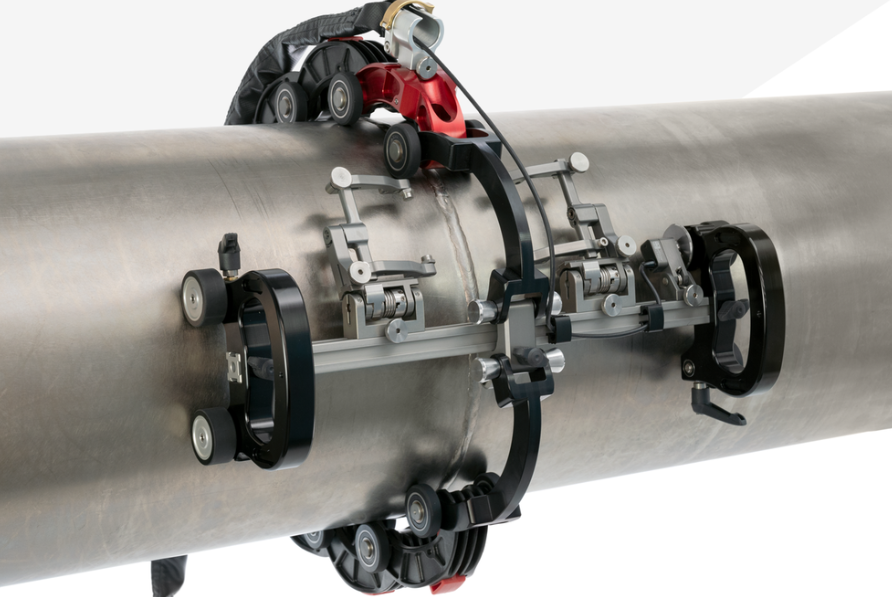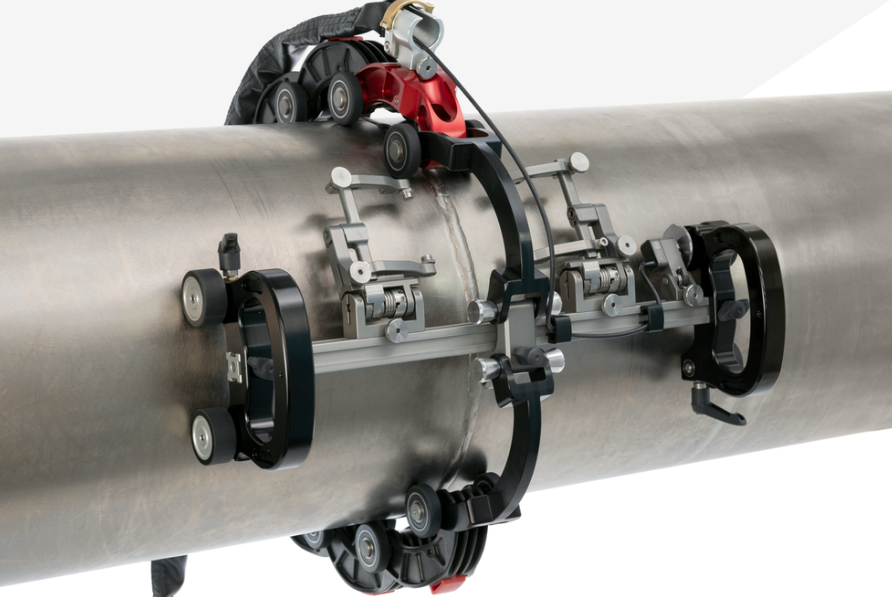



NM01CEG01238AD02
Choose Quantity
The JIREH Rotix - 2 Probe Weld Frame Scanner is a high-precision, manually operated scanner engineered for automated ultrasonic testing (AUT) of circumferential welds on a wide range of pipe diameters. Designed for robustness and ease of use in demanding industrial environments, the Rotix frame scanner ensures stable probe positioning and accurate data acquisition when paired with advanced ultrasonic flaw detection systems.
Key Features & Benefits:
Broad Pipe Diameter Range: Capable of scanning pipes with diameters from 10.2 cm to 96 cm (4 inches to 38 inches). This expansive range makes it a highly versatile tool for inspecting various pipe sizes encountered in pipelines, process piping, and pressure vessels.
2-Probe Weld Frame Design: The scanner's frame design is specifically engineered to straddle and traverse weld crowns smoothly. It supports two independent ultrasonic probes, making it ideal for advanced inspection techniques such as:
Time-of-Flight Diffraction (TOFD): Mounts a pair of TOFD probes (transmitter and receiver) for precise defect sizing.
Phased Array Ultrasonic Testing (PAUT): Can hold two phased array probes for enhanced coverage, dual-sided inspection, or specific beam configurations (e.g., pitch-catch).
Manual Operation: The scanner is manually operated, allowing the technician precise control over the scanning speed and direction around the pipe's circumference.
Encoded Motion: Equipped with a high-resolution encoder that provides accurate positional data along the scan path. This precise encoding is critical for generating repeatable and reliable C-scan images and other data maps when integrated with an AUT data acquisition system (e.g., Sonatest Veo+ or Prisma).
Sonatest VEO / Prisma Encoder Compatibility: Features a direct and compatible encoder connector for seamless integration with Sonatest's advanced VEO and Prisma series phased array and TOFD flaw detectors. This ensures plug-and-play functionality and robust data synchronization.
5 mm (0.197 in) Pivot Buttons: These small pivot buttons (likely on the probe holders or contact wheels) are a specific design feature that ensures consistent pressure and alignment of the probes on the pipe surface, even over weld crowns. They contribute to stable acoustic coupling and accurate data collection.
Robust & Lightweight Construction: Constructed from durable materials (e.g., aluminum, stainless steel) designed to withstand harsh field conditions while remaining relatively lightweight for easy setup and maneuverability.
Applications: Primarily used for girth weld inspection, but also adaptable for corrosion mapping and general flaw detection in circumferential areas of pipes.
JIREH Quality: Manufactured by JIREH Industries, a recognized leader in automated and manual NDT scanning solutions, known for their innovative and reliable inspection tools.
Specifications:
Manufacturer: JIREH Industries
Model: Rotix - 2 Probe Weld Frame Scanner
Pipe Diameter Range: 10.2 cm - 96 cm (4 inches - 38 inches)
Probe Capacity: 2 independent probe holders
Encoder: Integrated, compatible with Sonatest VEO / Prisma systems.
Encoder Connector: Sonatest-compatible (e.g., Lemo 10-pin or similar).
Pivot Buttons: 5 mm (0.197 inches)
Scanning Direction: Circumferential
Operation: Manual
Frame Type: Weld Frame (designed to traverse weld crowns)
Construction Material: High-grade aluminum and stainless steel components.
Typical Weight: [Exact weight will vary, but scanners of this type generally range from 5-15 kg for the unit itself. The shipping weight with case will be higher.]
Typical Applications:
Automated Ultrasonic Inspection (AUT) of Pipe Girth Welds: For pipelines, risers, and process piping.
TOFD (Time-of-Flight Diffraction) Inspection: For accurate crack and defect sizing.
PAUT (Phased Array Ultrasonic Testing): For comprehensive flaw detection and characterization.
Corrosion Mapping: Circumferential wall thickness mapping.
In-service Inspection and New Construction: Applicable in various industrial sectors including oil & gas, power generation, and chemical processing.
